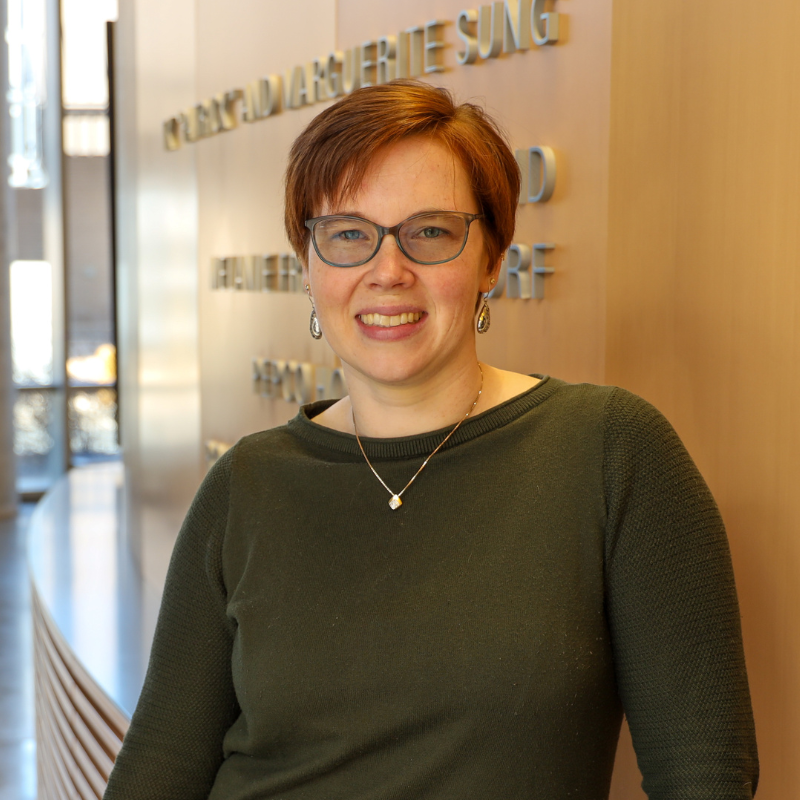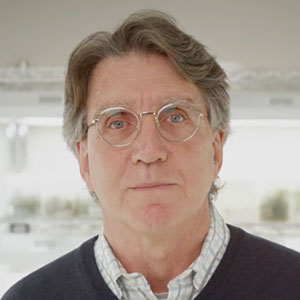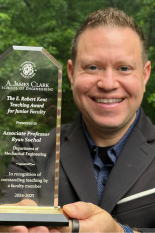News Story
Joe Huang Recieves Two NIH Funding Awards

Fischell Department of Bioengineering (BIOE) Assistant Professor Huang Chiao (Joe) Huang has received with University of Maryland, Baltimore (UMB) Department of Neurosurgery and Department of Obstetrics, Gynecology and Reproductive Sciences two new National Institutes of Health (NIH) funding awards of $3.2 million and $2.8 million. These awards will support Huang’s efforts over the next five years to develop novel light-based technologies to improve drug delivery across the tumor barrier for treatment of two types of cancer.
The team of UMCP/UMB researchers are working to develop new techniques to treat glioblastoma, the deadliest and most common type of adult brain cancer; and ovarian cancer, the second-most common gynecologic cancer in the United States.
The researchers, Department of Neurosurgery Chair Graeme F. Woodworth, M.D., neurosurgery faculty members Anthony J. Kim and Jeffrey A. Winkles, gynecologic oncologist Dana M. Roque, M.D., biomedical engineering assistant professor at University of North Carolina School of Medicine, and Huang are investigators on the project to improve the safety and efficacy of a laser-based procedure increasingly used to treat deep-seated, inoperable tumors, including those found in the brain and ovaries.
The team seeks to use specialized nanoparticles and an advanced local drug-delivery strategy that penetrates tumor tissues to enhance how laser interstitial thermal therapy (LITT) targets tumor cells while significantly reducing LITT’s effect on surrounding normal cells.
In addition to serving as a BIOE faculty member, Huang is a member of the oncology program at the University of Maryland Marlene and Stewart Greenebaum Cancer Center, and he has been elected to the American Society for Photobiology (APS) council. Huang is known for his efforts to engineer light-activatable materials that generate photochemistry with specific, tunable characteristics, and to understand the photochemical effects at the interface between biological systems and nanoscale materials. Examples of his contributions include photodynamic priming and multi-functional, tumor-activatable nanocarriers, which have helped to advance the field of photodynamic therapy. His research group is currently exploring the application of photodynamic priming — a sub-lethal, photochemistry-based strategy — to study physiological barriers to drug delivery, immune tolerance, and molecular drug resistance in cells and living animals.
For glioblastoma, tumor recurrence is nearly universal at the current time, and the median patient survival rate of around 15 months has not significantly changed in 20 years. Brain invasion by cancer cells, limited drug delivery, and treatment resistance render the cancer virtually untreatable with current surgical, chemotherapy and radiation therapy approaches.
In their research, Huang and colleagues are working to trap light and generate heat in nanometer scale particles, to better target heat within the cancer cells. This method allows converting light into heat to damage cancer cells and minimize damage to surrounding tissue.
In advanced ovarian cancer, invasive cells often spread within the peritoneal cavity. The resulting infection produces fluid that can slosh when people walk, generating physical stress in the abdomen that can cause more aggressive cancer.
The research team is targeting the epidermal growth factor receptor (EGFR), a biomarker present in most ovarian cancer tumors.
Building a nanoformation to detect and image cancer cells and the harmful proteins that poke out of their surfaces, they will use this particle to bind with a cancer cell and activate different light colors to switch on and off treatment.
Optimally, this procedure takes place after a surgeon removes the bulk of tumors, said Huang.
“Toward the end of a surgery, we’ll use the nano particle to do a surgical bed cleaning: detect, image, and treat,” he noted. “We anticipate this approach will also make the subsequent radiation or chemotherapy more effective for the patient.”
This article is written by Catherine Arnold
Published March 27, 2023






